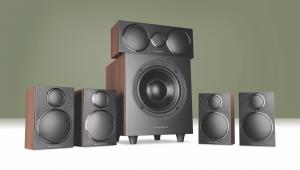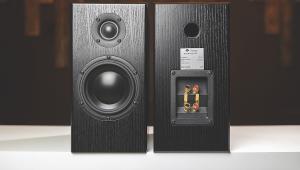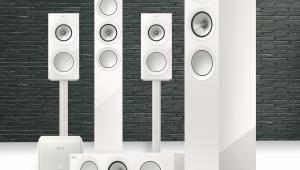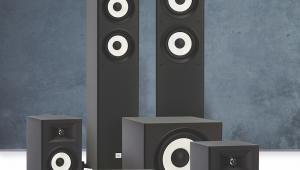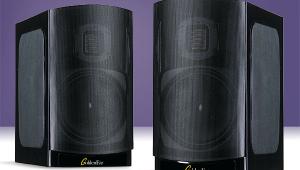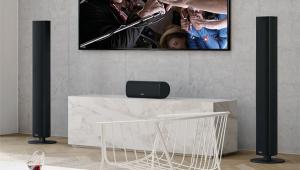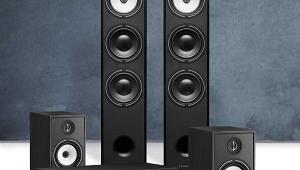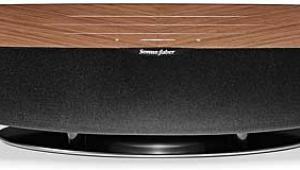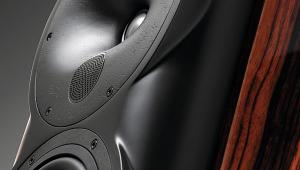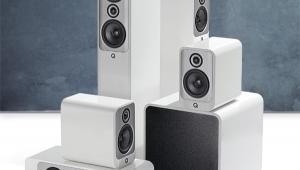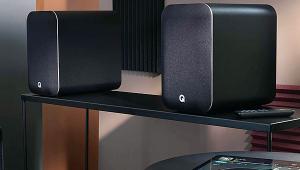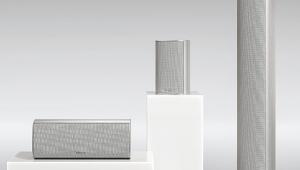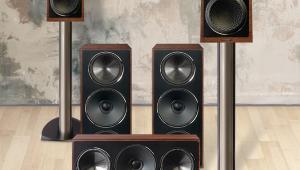Sony HT-A9 immersive audio system review
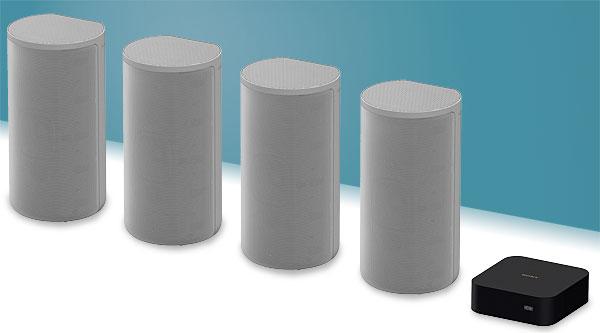
 Sony's latest DSP wheeze could be the most important surround sound invention since Dolby Atmos, argues Steve May
Sony's latest DSP wheeze could be the most important surround sound invention since Dolby Atmos, argues Steve May
Appearances can be deceiving. Much like Oscar Isaac in Moon Knight, Sony's HT-A9 looks relatively unassuming, even retro. But much like Marvel's latest superhero, in full flight it transforms into something altogether more formidable.
Comprising a quartet of enclosures that sit front and back, plus a control box/source hub, the £1,799 HT-A9 ushers in the concept of 360 Spatial Sound Mapping. This is quite a mouthful, but it may well be the most exciting immersive audio technology I've heard since Dolby Atmos arrived.
Think of it as immersive DSP-driven 3D sound. It's a way of enveloping you within what appears to be a dozen phantom speakers, and uses two complementary Sony technologies: Soundfield Optimisation and Monopole Synthesis.
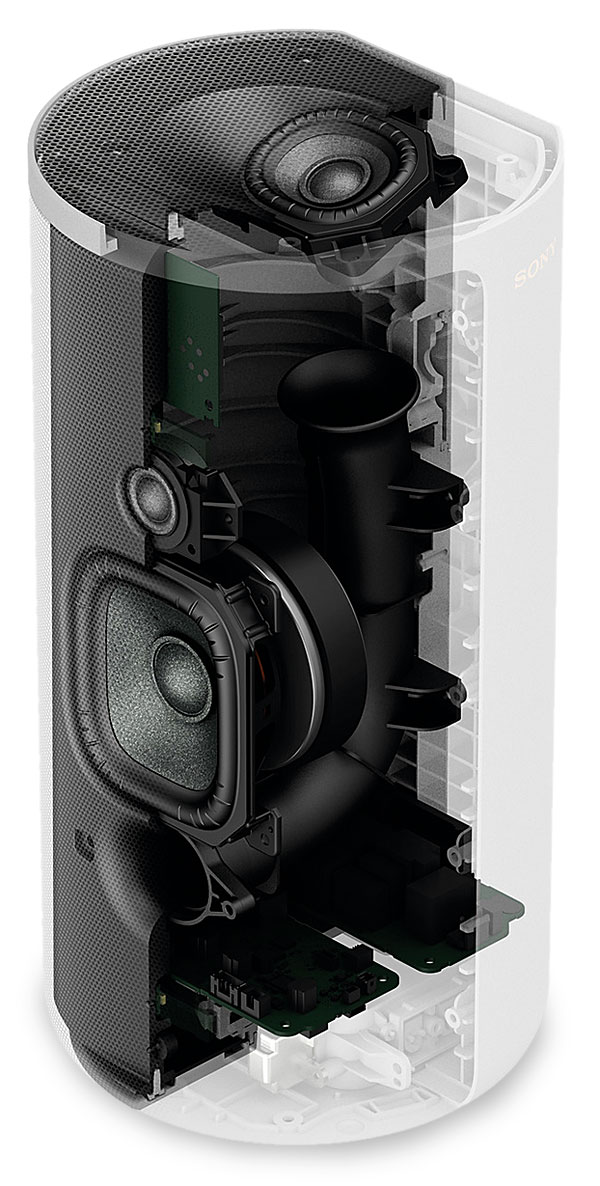
Soundfield Optimisation is a fast calibration technique. Two microphones in each speaker measure the position of each enclosure in relation to the ceiling, and the distance to other speakers in the package. Once the HT-A9 has a 'picture' of the room, Monopole Synthesis – essentially a blend of reflection, wave field synthesis and DSP – takes over, creating sonic wave fronts that come at you from all directions. And it really works.
Taking Control
All four of the system's SA-FLA9 speakers are wireless, save for their power cords, and pair with Sony's compact (150x150x52mm) controller module. This unit sports just two HDMI connections – one an input, and the other an output with eARC/ARC. Dolby Vision passthrough is supported, as is 4K/120 video playback, plus Auto HDR Tone Mapping and Genre Picture Mode for the PlayStation 5 console.
The HT-A9's control box also has a dedicated S-Centre/Acoustic Centre Sync output for owners of compatible Bravia TVs, and a 12V connection to a power brick. The unit connects to your home network over Wi-Fi or via Ethernet, and to your smartphone via Bluetooth for quick-fire music streaming.
Sony's speakers are quite large (around 30cm high), but nicely finished in light grey. Their mostly cylindrical shape, with bevelled baffle, is designed to minimise unwanted diffraction – and may help the cabinets blend in a bit with your decor, too.
Each one features an upwards-firing X-Balanced full-range driver, plus forward-facing tweeter and X-Balanced woofer. Providing the muscle is S-Master HX amplification, rated at a strangely specific 504W.
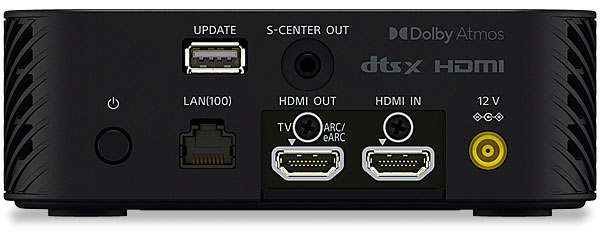
Part of the appeal of the HT-A9 is that speaker placement isn't deemed to be particularly crucial. You're encouraged to position the four boxes in roughly the right place, which is to say L/R front and L/R rear.
The system then needs calibration, and that's when the magic happens. With each speaker having integrated microphones, there's no need to take individual readings with an external device. The setup routine involves a series of chirps, lower tones measuring where the speakers are relative to each other, higher tones used to determine reflections.
The process is relatively quick... or at least it should be. For whatever reason, during my audition calibration failed mid-way, half a dozen times. So I adjusted the speakers, a nudge here and there, until it worked. Success finally came when I moved the two rears from a behind-the-sofa position further to the sides. This doesn't seem to fit with Sony's promise of a 'versatile layout for any kind of living room', but my experience will surely differ to yours.
Sound In Synthesis
In some ways, the 360 Spatial Sound Mapping concept throws back to Sony's original ES Series AV receivers, which used DSP-driven multi-dimensional processing based on 'temporal psychoacoustics', and even the phantom back channel of the STR-DN1080 model. But Monopole Synthesis, as employed here, takes the implementation of phantom speakers to another level.
What begins as a 4.0.4 physical system out of the box, post-calibration becomes a phantom 7.1.4 system. The resulting spatial bubble sounds largely indistinguishable from a physical multichannel speaker array. Any scepticism I had was quickly dispelled. Indeed, the HT-A9 sounds remarkable.
What's genuinely surprising is just how seamless its soundstage is. There are no sonic gaps between speakers front and back, and the balance appears entirely natural.
With any phantom execution, you run the risk of adding a somewhat diffuse element to the soundstage, but here I felt that I was literally surrounded by physical speakers. This synthesis was ably demonstrated during Call of Duty: Warzone. Here, as the fog of war shrinks your combat area, the HT-A9 places encroaching combatants with ease. I could distinctly hear them manoeuvring behind and to the side. Flyovers were also smooth and dramatic.
While the system lacks a physical subwoofer, there's still a pronounced bass extension. Objects thump and land with satisfying heft. You can add a wireless sub as an optional extra – both Sony's SA-SW3 and larger SA-SW5 are compatible – if you feel the need.
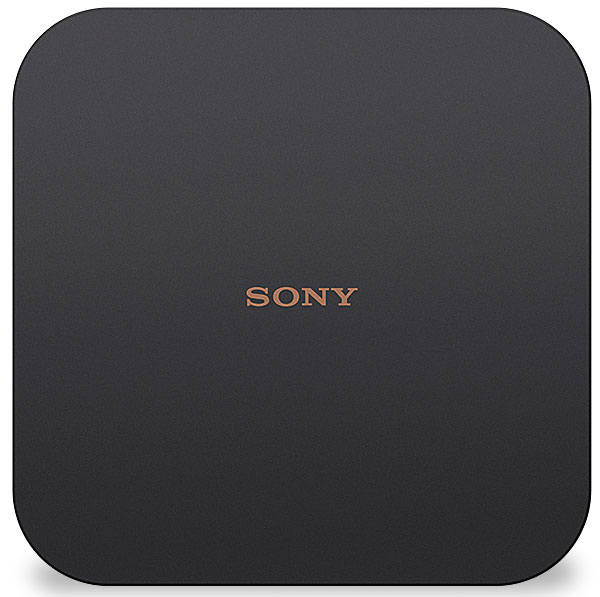
The HT-A9 is impressively dynamic. When there's a sudden burst of enemy fire, or large explosion, its sound hits with whip-crack speed. But it's not just the flashy stuff its does well – the sense of immersion is outstanding. In episode four of Moon Knight (Disney+), the bingo caller ('B22 anyone? Anyone got B22?') moves from front right to front left, then smoothly to the rear, and then into immersive ambiance, before heading front left ('N39?') as we track back to Oscar Isaac's visage. It's a gorgeous piece of sound design which the 360 Spatial Sound Mapping system absolutely gets right, and to replicate this level of sonic immersion using physical speakers rather than DSP hocus pocus would be an installation challenge.
Two-Channel Makeover
The HT-A9 is Atmos and DTS:X compatible, and offers two-channel upscaling via Immersive Audio processing, easily accessed by a large button on the remote. There's also support for Sony's 360 Reality Audio music format, and hi-res audio playback.
That aforementioned Acoustic Centre Sync output allows a Bravia TV to function as the centre speaker in an HT-A9 setup, although this will introduce a whole new timbre to the mix, which doesn't strike me as wise. The system isn't calibrated with the TV as a live speaker either, you have to tell the HT-A9 where the set is after the fact. The setup default makes the assumption that any display device is positioned between the front left/right speakers.
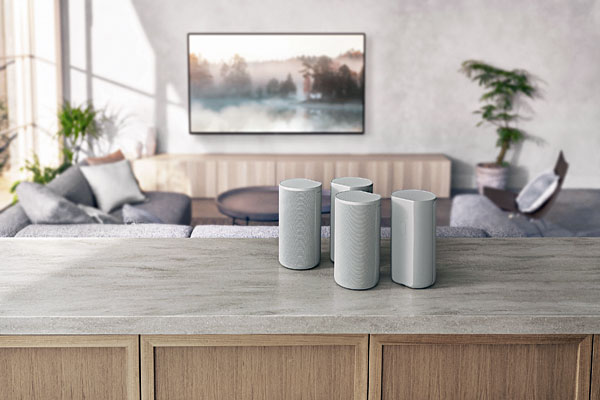
Beyond my calibration niggles, I enjoyed using the HT-A9. The control box provides a simple, graphical user interface for your TV with Watch, Listen and Setup tabs. Watch gives you the option of selecting that single HDMI input as your source, while Listen has quick access to Bluetooth, Spotify and Google Chromecast.
The remote control offers a fair amount of additional fiddling, including rear sound and bass volume levels, as well as audio presets for Cinema, Music and Standard. There's also a dynamically restricted Night mode, plus Voice emphasis (neither of which are recommended).
Master Of Immersion
There's no question that the HT-A9 creates a more involving soundstage than the majority of Dolby Atmos soundbars, even posh ones with upfiring Dolby Atmos drivers, but remarkably it's also equal to a good mid-range AV receiver and physical loudspeaker package.
There is, of course, one obvious shortfall: that single HDMI input on the control box is a limitation. The system relies on your screen's ability to act as the primary switch and source for AV gear and streaming services. You'll need to take stock of your setup to see just how practical this restriction proves to be.
As an alternative to a soundbar and even a full-blown home cinema system in a living room space, though, Sony HT-A9 is hugely impressive with movies, games and music. In fact, I'd say this inaugural implementation of 360 Spatial Sound Mapping with Monopole Synthesis is as much of a game changer as it is a tongue twister. Get an audition – I reckon you'll be over the moon.
HCC Verdict
Sony HT-A9
Price: £1,799
www.sony.co.uk
We say: This stunning four-speaker system creates convincing immersive audio, with phantom speakers that sound smoother than the real thing. The results are astonishing.
Overall: 5/5
Specifications
DRIVE UNITS: 1 x 19mm soft dome tweeter; 1 x X-Balanced woofer; 1 x X-Balanced upfiring Dolby Atmos driver (per speaker) ONBOARD POWER (CLAIMED): 504W total output CONNECTIONS: 1 x HDMI input; 1 x HDMI output with ARC/eARC; S-Centre output; Ethernet; USB (for firmware updates) Dolby Atmos/DTS:X: Yes/Yes Separate subwoofer: No REMOTE CONTROL: Yes Dimensions (speaker): 147(w) x 313(h) x 160(d)mm WEIGHT: N/A
FEATURES: Wi-Fi; Bluetooth; S-Master HX amplification; 360 Spatial Sound Mapping and Monopole Synthesis; Auto Sound, Cinema, Music and Standard presets; Night Mode; Voice Mode; Immersive Audio Enhancement; Auto HDR Tone Mapping and Auto Genre Picture Mode for PlayStation 5; HDR passthrough (incl. Dolby Vision); Works with Alexa; Google Chromecast; Spotify Connect; Apple AirPlay 2; optional subwoofer; 4K/120 playback; Sound Field Optimisation; wireless connection between control box and speakers
 |
Home Cinema Choice #351 is on sale now, featuring: Samsung S95D flagship OLED TV; Ascendo loudspeakers; Pioneer VSA-LX805 AV receiver; UST projector roundup; 2024’s summer movies; Conan 4K; and more
|




